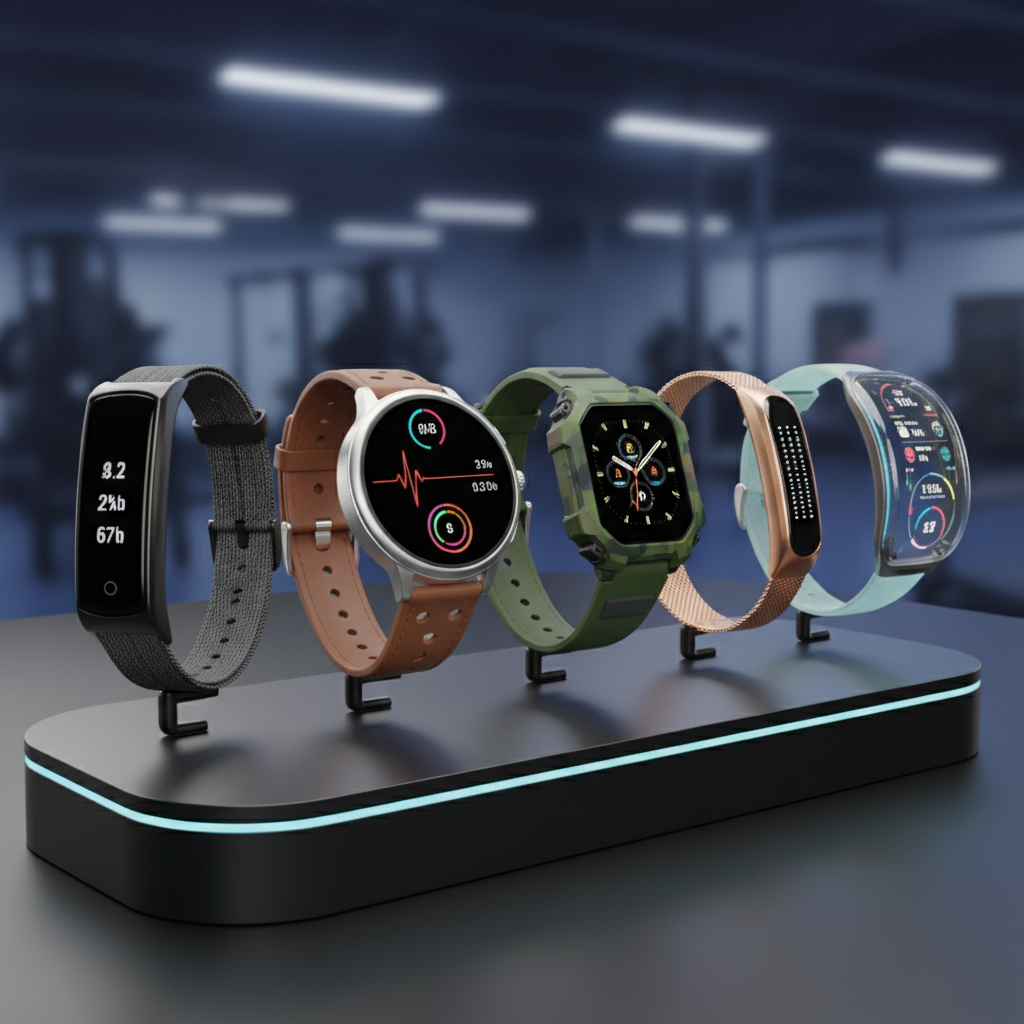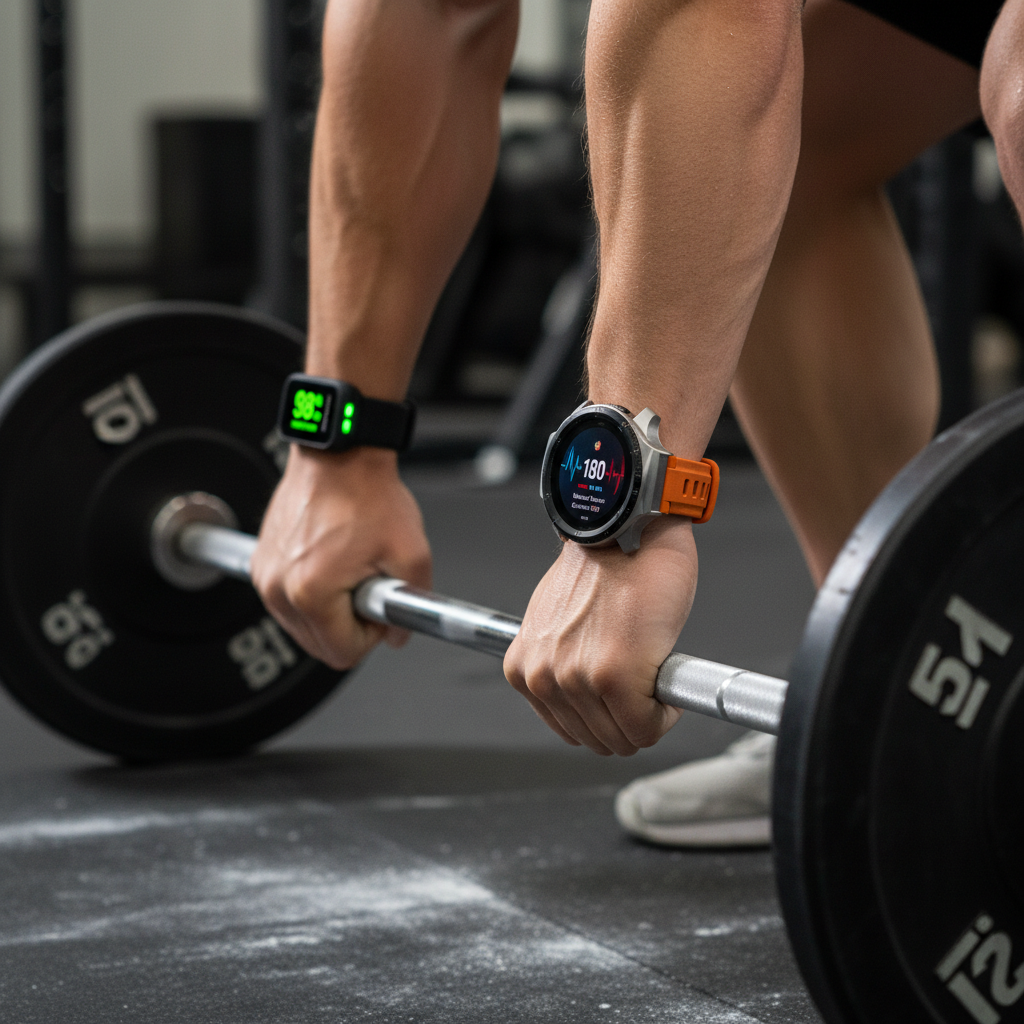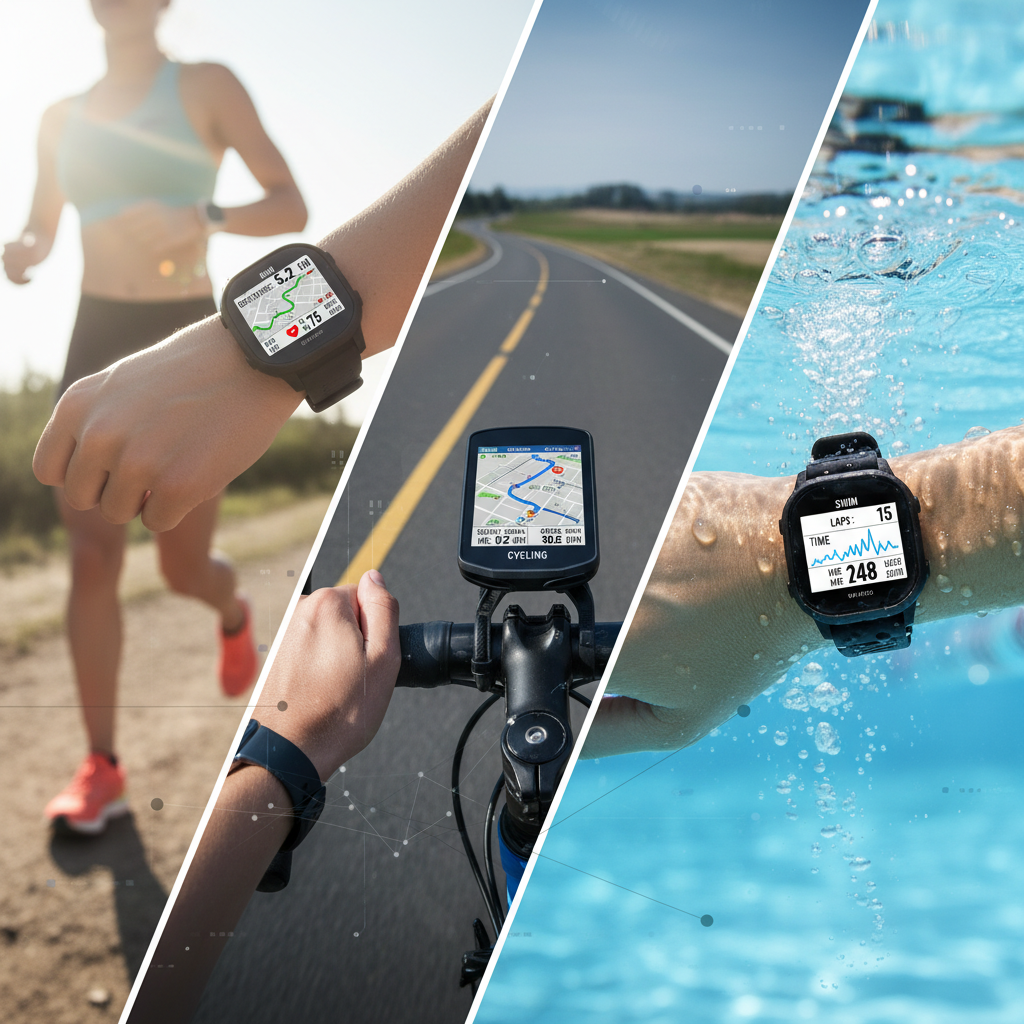
Ready to train like a pro? The 2025 wave of premium fitness trackers offers more than steps and calories—they’re purpose-built to power your passion, with real-time coaching, advanced heart rate analytics, multi-band GPS, and recovery metrics that elite athletes now consider essential. But which tracker is tailored for your sport? Don’t settle for generic: use this targeted guide to match today’s smartest wearables to your training style—whether you crave PBs, muscle gains, epic rides, or weekend warrior wins.
Meet the New Gold Standard: Premium Fitness Tech for Every Athlete
The latest generation of fitness trackers isn’t just about monitoring; it’s about optimizing performance and preventing injury through personalized analytics. Premium models now feature:
- Multi-band GPS for pinpoint route accuracy—crucial for runners and cyclists who demand reliable stats in urban and backcountry settings.
- Advanced heart rate sensors—new algorithms handle intervals, HIIT, and reps as well as steady cardio.
- Wrist-based running power and recovery insights to dial in intensity and maximize adaptation.
- Rep counting, swim tracking, and sport-specific coaching, powered by AI and pro athlete data.
Don’t get left behind: manufacturers like Garmin, Apple, Samsung, COROS, and Whoop are already rolling out 2025 upgrades—and top models are selling out fast after spring launches[1][2][3].

For Runners: Chase PBs With Next-Gen Tracking
Serious about running? Ignore basic bands—reach for the Garmin Forerunner 265 or Forerunner 165. Both deliver:
- Dual-frequency GPS for hyper-accurate tracking, even in city canyons or under heavy tree cover[1][3].
- Real-time race coaching and VO2 max estimates to fine-tune training blocks.
- Wrist-based running power—see how much force you generate, right on your wrist.
Garmin Forerunner 265 ($449): Vibrant AMOLED, full training analytics, recovery advisor, and daily suggested workouts[3].
Garmin Forerunner 165 ($249): Same elite GPS/HR tracking, VO2 max, and Race Day tools—at $200 less. Misses some advanced training metrics, but a best-in-class pick for most runners[1][3].
Craving a smarter watch? The Apple Watch Series 11 (from $399) now supports advanced running metrics, heart rate zones, and third-party AI coaching—but battery life is still a limiting factor for marathoners[1][4].
Runner’s Quick Decision:
- Serious data, best value: Garmin Forerunner 165
- Pro-level, full stats: Garmin Forerunner 265
- Smartwatch with fitness DNA: Apple Watch Series 11
Stock alert: Both Forerunner models have seen waitlists after Boston and London marathons—buy early before the summer training rush.
For Lifters & HIIT Athletes: Track Power, Reps, and Recovery
Lifting, CrossFit, or HIIT? Accurate heart rate under load, rep detection, and recovery monitoring are your priorities.
- Whoop 5.0 / Whoop MG: Screenless design, pro-grade recovery analytics, strain/coaching tailored for high-intensity athletes, and even blood pressure/Afib detection (MG model)[1][2]. Subscription ($16/mo), but the hardware is ‘free’—and data granularity is unmatched. No built-in GPS, but pairs with your phone for run/cycle mapping.
- Samsung Galaxy Watch Ultra ($599): Advanced BioSensor, real-time HR during intense sets, rep counting, and body composition analysis. Built to absorb gym abuse. Week-long battery and full smartwatch features[4].
Want classic rep tracking? Garmin Venu 4 ($349) combines robust gym features with attractive design and sports coaching, or Fitbit Charge 6 ($159) delivers advanced heart rate, sleep, and stress tracking with a slim profile—just note, the best analytics require a monthly Fitbit Premium subscription[1].

Lifter’s Quick Decision:
- Elite recovery & strain: Whoop 5.0 / MG (for the data-obsessed)
- Smartwatch + gym: Galaxy Watch Ultra
- Best value, compact: Fitbit Charge 6
Pro tip: Whoop’s analytics are now cited by pro teams and sports scientists—if recovery is your secret weapon, this is your edge[1][2].
For Cyclists: Navigation, Endurance, and Real-World Range
Cyclists need top-tier GPS, long battery life, and compatibility with cycling sensors. In 2025:
- Garmin Forerunner 265 & 965 ($449–$599): Multi-band GPS, turn-by-turn navigation, bike profiles, power meter support. The 965 adds full-color maps and real-time stamina tracking for ultra events[3].
- COROS Pace 3 ($229): Affordable but mighty—14-day battery, accurate dual-frequency GPS, HRV-based stress tracking, and sport-specific cycling analytics. Software updates in 2025 added marathon/triathlon plans and advanced wellness checks[3].
- Garmin Venu 4 ($349): If you also run or swim, this all-arounder brings cycling tracking plus a vivid display and music storage[3].
Cyclists—don’t overlook the PACE 3: it’s often in low supply after big event expos, so act fast if you spot a deal.
For Weekend Warriors & Multisport All-Rounders
If you dabble in everything—5Ks, weights, yoga, pool laps, and epic hikes—look for versatility, robust health analytics, and strong battery life:
- Garmin Vivoactive 5 ($299): Best overall 2025 pick for balance of GPS, heart rate, advanced sleep, and stress tracking—with a week-long battery[2][4].
- Samsung Galaxy Watch Ultra ($599): More smartwatch, but exceptional for those who want calls, apps, and health stats in one.
- ScanWatch 2 ($349): Medical-grade health features, ECG, and everyday fitness, wrapped in a stylish hybrid design[1].
How to Pick the Right Tracker—A Step-by-Step Action Plan
- Identify your main sport: Are you a runner, lifter, cyclist, or mix it up?
- Set your must-have features: (e.g., dual-band GPS, recovery analytics, rep counting, battery life for ultras).
- Decide your price ceiling: Premium trackers start as low as $159 (Fitbit Charge 6) and climb to $599 (Galaxy Watch Ultra).
- Check for exclusive deals: Major races and retail events (e.g., Black Friday, major marathons) often trigger flash sales or limited-edition models.
- Buy from official retail channels: Watch for counterfeits and outdated models—demand for premium models spikes before race seasons!
Don’t wait—some Garmin and COROS models have already faced inventory crunches after endurance events this year.
Urgent Pro Tip: Don’t Get Locked Out of Next-Gen Features
Brands are now rolling out software features exclusively for newer models. If you want access to AI-driven recovery, advanced run power, or the latest health sensors, choose a 2025 release. Even if you’re thrifty, the Xiaomi Smart Band 9 (£34.99/€39.99) is a budget marvel with heart rate and solid sports modes[1]—but know what premium analytics you’re sacrificing.

Ready to Elevate Your Training? Here’s What to Do Next
- Pinpoint your primary sport and priority features using the guide above.
- Compare today’s best models (see above) for your sport and budget.
- Act now—premium fitness trackers are in high demand as 2025 training seasons kick into gear. The difference between a cheap band and an elite tracker is the difference between guessing and winning.
Don’t settle for ‘one-size-fits-all.’ Become the athlete you want to be—smarter, faster, and stronger—with the right fitness tech guiding every session. Upgrade now and secure yours before the next restock delay.


